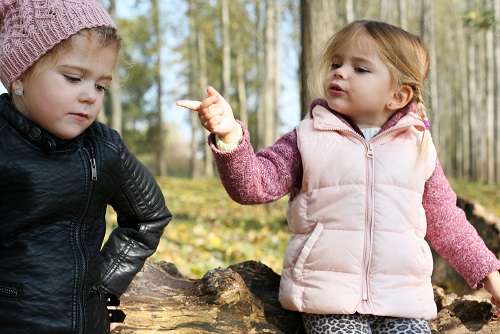What does playing I Spy accomplish?
- It aids in language development. “I Spy” primarily develops and reinforces vocabulary.
- It aids in social development. Language development is a precursor to communication and therefore is related to a child’s social development. “I Spy”, because it needs more than one player, works on social skills. Children learn to cooperate, take turns, and practice give-and-take.
How to play: Players take turns trying to guess which nearby object has been selected by one of the players.
- Look around and silently select an object that can be seen by all the players.
- Say, “I spy with my little eye,” and then give some description of the object, such as “something red,” “something square” or “something small.”
- All the players take turns trying to guess what the object is.
- Let the player who correctly guesses the selected item pick the next object, or have all players take turns in a set order.
- Offer clues if the players just can’t guess after a while.
Variations:
- Play this 1:1 with a young child while reading a book together. If a child is too young to follow the story, simply say, “I spy with my little eye something “red” on this page.” Then, the child can point or say what they think the object is.
- If you are playing with a group of young children, you may want to limit the space in which they can choose an object. So instead of being able to “spy” anything in the entire room, hold up a poster with lots of objects on it. Or, choose a section of the room.
- Expand the activity by having older children make a collage board of “I Spy” objects to play the game with younger children. You would need big poster board, scissors, glue, and magazines with everyday pictures.
© Parent Trust for Washington Children

